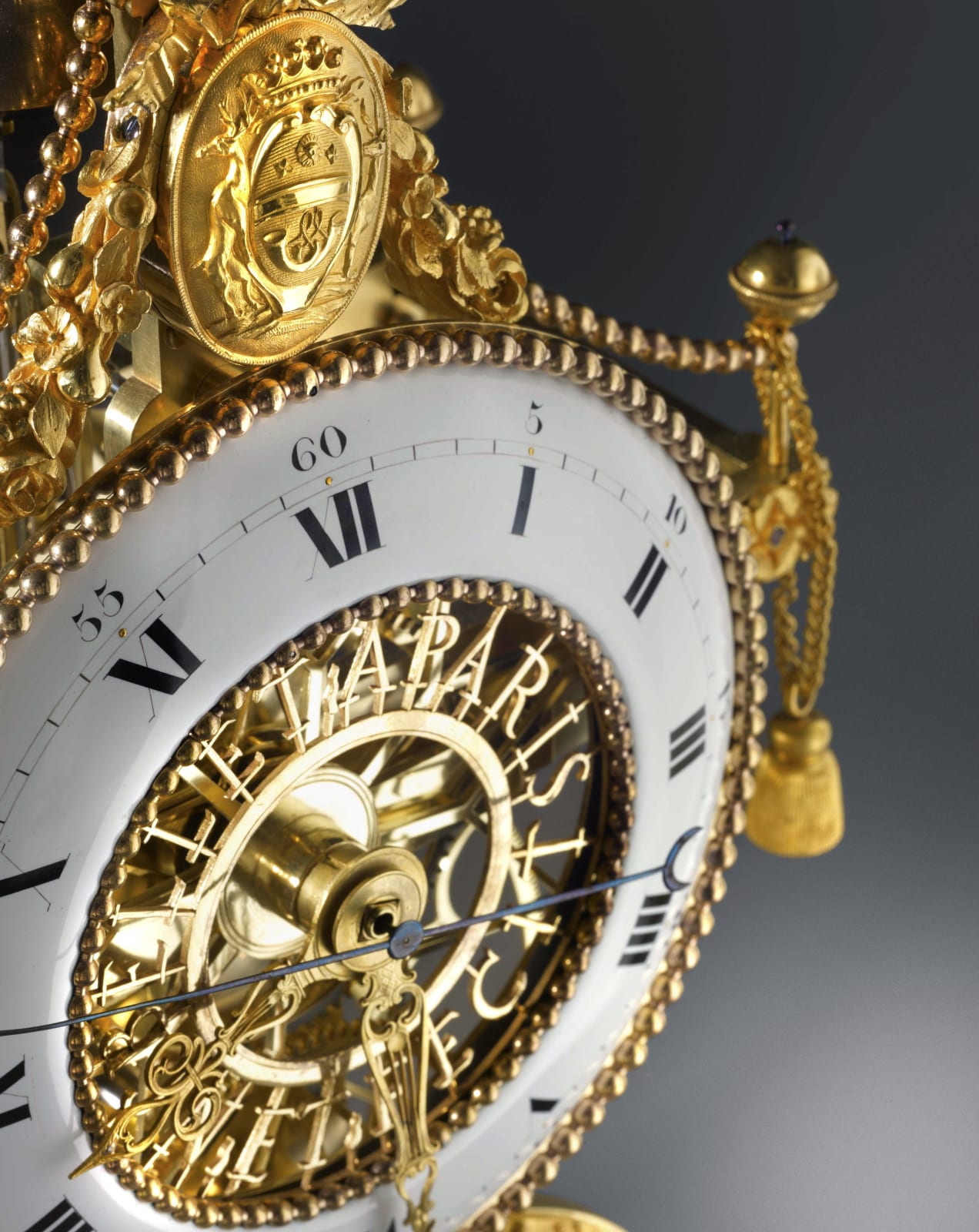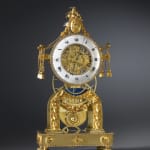N. J. Bellet
A rare and imposing Directoire gilt bronze skeleton clock, signed in cut-out brass letters within the dial centre N J Bellet à Paris et Fecit, the white enamel dial ring with Roman and Arabic numerals and a beautiful pair of pierced gilt brass hands for the hours and minutes and a blued steel sweep centre seconds pointer. The cut-out dial with beaded bezel showing the skeletonised movement surmounted by a bell partly obscured by a ribbon-tied medallion cast with a crest composed of a crown below a pair of stags and hunting horns, the medallion issuing floral swags and beaded chains that suspend either side of the dial, with an arched frame below the dial cast with berried laurel and other foliage and flowers and hung with a floral swag, on a rectangular plinth decorated with beaded edges on gadrooned toupie feet
Paris, date circa 1795
Height 46 cm, width 22 cm.
Skeleton clocks such as this that showed all parts of the movement were greatly in vogue toward the end of the eighteenth century. This period was noted firstly for several technical advances, which encouraged clockmakers to exhibit their own innovations and secondly for the evident desire on the part of the clock and case makers to recreate a more delicate and lighter appearance in contrast to the more solid earlier case models.
Despite the ingenuity and finesse of maker's signature as well as the evident complexity of the movement, the name of N. J Bellet appears to be unrecorded, unless he is the same as Bellet à Paris, whose name appears on an Empire clock (as noted in the supplement to Tardy, "Dictionnaire des Horlogers Français", 1971, p. 661). It is also conceivable that N. J. Bellet was a synonym since during the time of the Revolution a number of clockmakers who, having previously worked for the monarchy preferred to retain anonymity, such as Bazile Le Roy (1731-1804) who signed under the guise of 'Elyor'.



